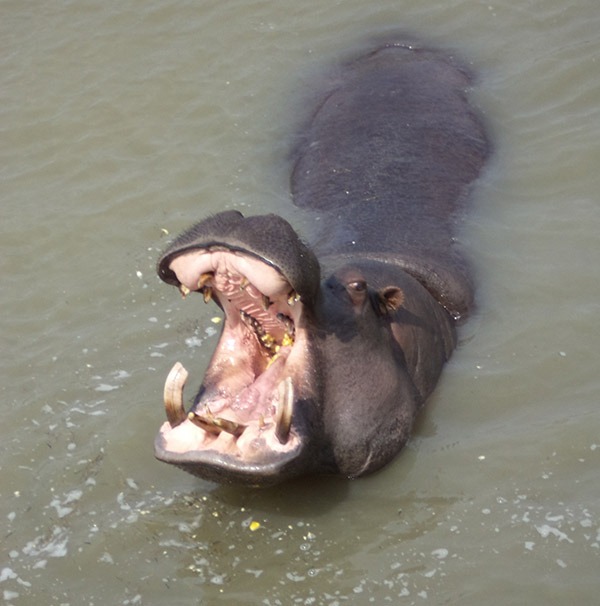Hippos Shake Off The Winter Blues!

Now that the weather is starting to improve, our hippos are beginning to spend more time outdoors. Visitors to Flamingo Land over the winter may have noticed that the hippos aren’t very keen on the rain and cold (even though they spend a lot of their time in water getting wet!) so they spend a larger amount of time indoors. However, they are now starting to come outside on a regular basis and can be seen wandering around their yard, sitting in their mud wallow or taking a dip in their lake.
We have three adult hippos at Flamingo Land; one male and two females. The male, Ernie, lives here with his mum, Betty, and his aunt, Godzilla. It can be difficult to tell who’s who within the group if they are in the water because all you can see is a bit of their back and the tops of their heads! However if they are out of the water, there are ways to tell. Ernie is the largest of our hippos, Betty has one pink foot and Godzilla has a missing front tooth, easily visible if she opens her mouth for something to eat.
There are only two species of hippopotamus still alive today, the common hippo which we have at Flamingo Land and the pygmy hippo. They are the third-largest land mammal, after the elephant and rhinoceros. Although they might not remind you of them very much, hippos are most closely related to whales, dolphins and porpoises! Despite being such large animals, they are completely herbivorous, eating mostly grass. However, they are still very dangerous, as they have large teeth, can be aggressive and can easily outrun a human. Apart from humans, adult hippos don’t really have any predators, however Nile crocodiles, lions and hyenas will sometimes prey on youngsters.
Attacks by prides of lions or groups of crocodiles on adult hippos have been reported but are extremely rare.Even though hippos spend a lot of time in and around water, they are not particularly good swimmers and they can’t float. However, they can hold their breath underwater for up to five minutes. Their eyes, ears and nostrils are all in a line near to the top of their heads, meaning that they only have to have their heads slightly out of the water in order to see, hear and breathe. There are several large boulders in the hippo lake at Flamingo Land and it’s very easy to mistake one of our hippos for just another rock! So next time you’re at Flamingo Land, look carefully and see if you can spot all of our hippos!


